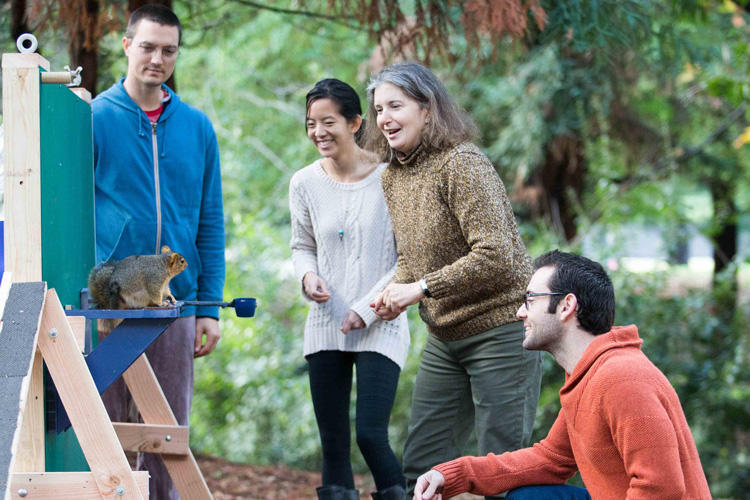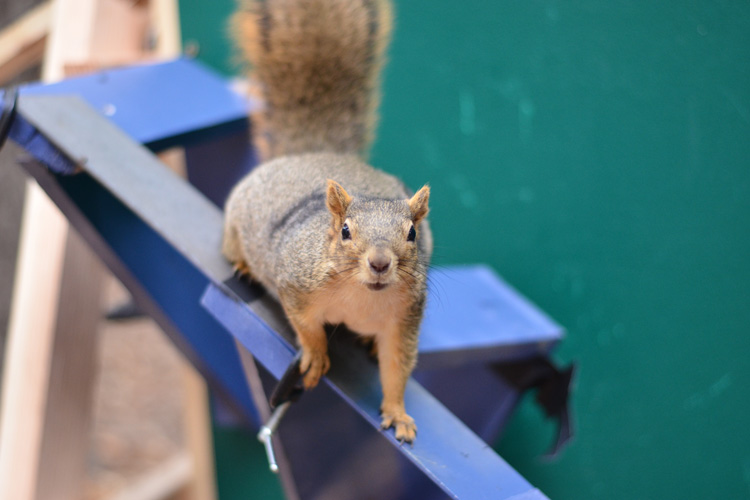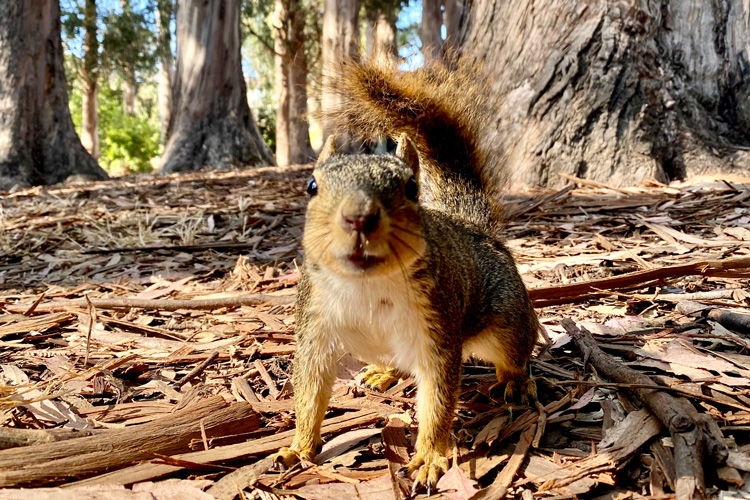Leaping squirrels! Parkour is one of their many feats of agility
Videos of squirrels leaping from bendy branches across impossibly large gaps, parkouring off walls, scrambling to recover from tricky landings.
Just more YouTube content documenting the crazy antics of squirrels hell-bent on reaching peanuts?
No, these videos are part of a research study to understand the split-second decisions squirrels make routinely as they race through the tree canopy, jumping from branch to branch, using skills honed to elude deadly predators.
The payoff to understanding how squirrels learn the limits of their agility could be robots with better control to nimbly move through varied landscapes, such as the rubble of a collapsed building in search of survivors or to quickly access an environmental threat.
Biologists like Robert Full at the University of California, Berkeley, have shown over the last few decades how animals like geckos, cockroaches and squirrels physically move and how their bodies and limbs help them in sticky situations — all of which have been applied to making more agile robots. But now they are tackling a harder problem: How do animals decide whether or not to take a leap? How do they assess their biomechanical abilities to know whether they can stick the landing?
“I see this as the next frontier: How are the decisions of movement shaped by our body? This is made far more challenging, because you also must assess your environment,” said Full, a professor of integrative biology. “That’s an important fundamental biology question. Fortunately, now we can understand how to embody control and explain innovation by creating physical models, like the most agile smart robots ever built.”

To tackle these questions, Full and former doctoral student Nathaniel Hunt, now an assistant professor of biomechanics at the University of Nebraska, Omaha, joined forces with professor of psychology Lucia Jacobs and former UC Berkeley doctoral student Judy Jinn. Jacobs and her students have developed precise methods to study cognition in wild campus squirrels, and they proposed integrating these studies with biomechanics, extending Full’s laboratory models not only to mammals for the first time, but to a wild mammal — squirrels — that had experienced the full natural development of its agility.
In a paper appearing this week in the journal Science, this interdisciplinary team reports on its most recent experiments, quantifying how free-ranging squirrels learn to leap from different types of launching pads — some bendy, some not — in just a few attempts, how they change their body orientation in midair based on the quality of their launch, and how they alter their landing maneuvers in real-time, depending on the stability of the final perch.
“As a model organism to understand the biological limits of balance and agility, I would argue that squirrels are second to none,” Hunt said. “If we try to understand how squirrels do this, then we may discover general principles of high performance locomotion in the canopy and other complex terrains that apply to the movements of other animals and robots.”
The experiments were conducted in a eucalyptus grove on the UC Berkeley campus, where Hunt enticed fox squirrels that roam the campus into sketchy situations where they had to decide whether to leap for a peanut or let it go.
Hunt and Full found that, as expected, the flimsier or more compliant the branch from which squirrels have to leap, the more cautious they are. But it took squirrels just a few attempts to adjust to different compliances.
“When they leap across a gap, they decide where to take off based on a tradeoff between branch flexibility and the size of the gap they must leap,” Hunt said. “And when they encounter a branch with novel mechanical properties, they learn to adjust their launching mechanics in just a few jumps. This behavioral flexibility that adapts to the mechanics and geometry of leaping and landing structures is important to accurately leaping across a gap to land on a small target.”

But they don’t balance the bendiness of the launching branch and the gap distance equally. In fact, the compliance of the branch was six times more critical than the gap distance in deciding whether to jump.
This may be because squirrels know that their sharp claws will save them if they miscalculate. Their claws are so failproof, Hunt said, that none of the squirrels ever fell, despite wobbly leaps and over- or undershot landings.
“They’re not always going to have their best performance — they just have to be good enough,” he said. “They have redundancy. So, if they miss, they don’t hit their center of mass right on the landing perch, they’re amazing at being able to grab onto it. They’ll swing underneath, they’ll swing over the top. They just don’t fall.”
That’s where exploration and innovation come into play as squirrels search for the best leaping strategy.
“If they leap into the air with too much speed or too little speed, they can use a variety of landing maneuvers to compensate,” Hunt said. “If they jump too far, they roll forward around the branch. If they jump short, they will land with their front legs and swing underneath before pulling themselves up on top of the perch. This combination of adaptive planning behaviors, learning control and reactive stabilizing maneuvers helps them move quickly through the branches without falling.”
One unsuspected innovation was that during tricky jumps, squirrels would often reorient their bodies to push off a vertical surface, like in human parkour, to adjust their speed and insure a better landing. Parkour is a sport in which people leap, vault, swing or use other movements to quickly traverse obstacles without the use of equipment.
Full and Hunt continue to explore the interaction between biomechanical abilities and cognition as squirrels learn new gap-leaping strategies.
Co-authors of the paper are former UC Berkeley psychology graduate student Judy Jinn and Lucia Jacobs, a UC Berkeley professor of psychology and an expert on animal cognition. Full and Jacobs, who operates a Squirrel School at UC Berkeley, are part of a multi-university consortium funded by the Army Research Office (ARO) to model the cognition and decision processes in squirrels to one day create the world’s first robot with squirrel capabilities.
The current work was supported by ARO, the National Science Foundation and the National Institutes of Health.

